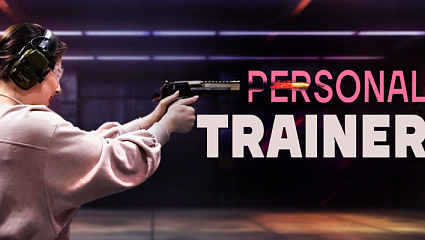Cruiser Aurora: Ship Number One
Olga Bubnova, reporter: "Bayan, Buyan or even Polkan. Those could be the names of the well-known Russian cruiser. But the emperor Nicholas II chose the name "Aurora" for the armed ship. And in 1900, the cruiser was launched."
In the morning of May 11, accompanied by celebratory gunfire, the new ship was triumphantly launched. Aurora belongs to the first series of cruisers constructed in Russia. Before that, these warships were "born" only outside our country. Aurora has started its journey in the presence of the emperor Nicholas II and two empresses – Maria Fedorovna and Aleksandra Fedorovna. And 17 years later, the imperial cruiser became one of the main symbols of the October Revolution.
For its times, Aurora was an advanced combat ship. The mechanisms of the cruiser are nearly 12 thousand horse powers strong. And the maximum rate of sailing is more than 19 knots, that is about 35 kilometers per hour.
You can call Aurora only "a cruiser" or "a ship". Its prohibited to call it “a vessel” onboard, though this word is popular with journalists.
"As soon as weapon is installed on a watercraft, it becomes a ship. Therefore, military seamen do not naturally call ship "a vessel". It can be even considered offensive. It’s like calling a captain of the first rank "colonel"."
Today Aurora has an honourable status: "The Ship Number One" in the Russian Navy. But military crew has been sharing the cruiser with civil crew for more than 60 years: Aurora is probably the best-known Russian floating museum. They tell here not only about revolution. For example, this hall is devoted to the life of the lower ranks of the Imperial fleet at the beginning of the 20th century. What did sailors eat that, drink, where did they sleep?
Yury Sergayev, Assistant Manager of the branch of the Emperor Peter the Great Central Naval Museum on the Cruiser Aurora: "The canvas mattress is filled with cork chips. Lifejackets had not been invented yet, so a sailor could throw it on water and use it as rescue equipment. And the last way to use the bed: if a sailor died at sea, they threw away cork from mattress, sew the body into this canvas bag, and buried the seaman in the sea."
Seamen ate at suspended tables letting them have peaceful breakfast or dinner even when the ship was rocking. The well-known "state glass" was a type of daily allowance on the fleet. They also called it the wine portion: each sailor in deep-sea voyage was given 123 grams of vodka daily.
Yury Sergayev, Assistant Manager of the branch of the Emperor Peter the Great Central Naval Museum on the Cruiser Aurora: "Still, sobriety was welcome in fleet. The sailor could refuse this glass, and then 5 to 8 kopeks were credited to his account, actually, the product price of the product at that time on the fleet. And now, imagine: if a ship is in the sea for half a year, the sailor refuses this portion, then he could save enough money before he returned."
Aurora underwent battle testing in May 1905, during the Tsushima battle. And after the Russian-Japanese war, the cruiser served as a training ship. The Naval College cadets went to deep-sea voyages on Aurora after termination of their studies. In the course of one of such practical, or noncombat, campaigns, the Russian cruiser appeared in Siam. It was in November 1911.
Yury Sergayev, Assistant Manager of the branch of the Emperor Peter the Great Central Naval Museum on the Cruiser Aurora: "I guess, a snow-white yacht would look better there. But what we see was a fighting cruiser among palm trees… One episode of that Siamese campaign was when Aurora entered the port of Batavia. Now it is Jakarta, the capital of Indonesia."
This diorama depicts St. Petersburg one second before the historical shot which gave Aurora its title of a "symbol of revolution".
Yury Sergayev, Assistant Manager of the branch of the Emperor Peter the Great Central Naval Museum on the Cruiser Aurora: "At 9:40 PM, Aurora made the one and only blank shot. I emphasize it, not fire (a lot of people make this mistake); fire must come from at least two guns. The one and only blank shot towards the Winter Palace. In three days, sailors of Aurora made statement in press that they had no assignment to destroy or to kill anyone… They never had a task like that."
The blank shot of Aurora just called the revolutionary squadron for vigilance and alertness.
The cruiser began to serve under St. Andrew's Flag. But throughout its long history, Aurora "changed clothes" several times.
Yury Sergayev, Assistant Manager of the branch of the Emperor Peter the Great Central Naval Museum on the Cruiser Aurora: "During the revolutionary events, the usual St. Andrew's Flag was replaced by a red cloth. The ship served under this flag for a long time. Seamen know that this flag means "I conduct battle!"
As a rule, a military cruiser serves about 25 years. Aurora has served much longer. When the World War II began, the ship was 41 years old. This is considered to be a very solid age even today. But still, Aurora took part in the Great War.
Yury Sergayev, Assistant Manager of the branch of the Emperor Peter the Great Central Naval Museum on the Cruiser Aurora: "They remove tools of the main caliber from it and direct it to the forming Chudskaya flotilla; one of its tools was installed on the armored train Baltiets which shuttled along the southern coast of the Gulf of Finland and protected our city from the coast."
The cruiser defended Kronstadt against fascist artillery fire. On Dudergofsky heights, a special purpose battery "A" – "Aurora" was organized. Nearly 130 Aurora sailors fought ashore. And after the German advance, only 26 of them broke out of encirclement.
In 1944, the Nakhimov Naval Academy was established in Leningrad. And Aurora became the second home for its students. At that time, there was already a museum on the cruiser. But nevertheless, two senior classes lived here and were on ship’s watch.
We go down to the heart of Aurora – the engine room.
Yury Sergayev, Assistant Manager of the branch of the Emperor Peter the Great Central Naval Museum on the Cruiser Aurora: "Here, in this room, sailors – with no sun, no air – sailors went into battle, died for their motherland, in such conditions, at a temperature from about 40 to 70 degrees. Can you imagine it? In southern latitudes, it was about 70 degrees here."
Here, 96 coal heavers serviced 24 boilers, the life source of Aurora.
"The water is here, right under the crankshaft. We have about four-five meters of water above us."
Sailors in the engine-room were – literally – detached from the rest of the world.
"In alarm situation and, naturally, during fight, these sliding doors were closed, and sailors servicing the machine stayed here face to face with the steam engine. Acoustic pipes were the only means of communication with the outer world. Each pipe lead to a separate battle station. Well, let’s suppose, a running post. How did it work? Each pipe has a stopper like this, it is a whistle. A pipe is filled with air, naturally. When a person wanted to call someone from the upper station, he came here, took out the whistle, and did like this. A whistle whistled above, and people understood that someone from the third engine room wanted to contact them. Your ear against the pipe – that’s how communication was organized. Phones appeared much later."
Aurora was brought to life and run by coal, just like other ships of that time.
Yury Sergayev, Assistant Manager of the branch of the Emperor Peter the Great Central Naval Museum on the Cruiser Aurora: "Actually, those were not small pieces. It came in huge sheets. Coal heavers broke this coal with special entrenching tools and stoke a furnace with it. Coal burned. And fresh boiler water, purified as much as possible from all impurities, evaporated. What for? To set the ship in motion."
When a ship as powerful as Aurora anchors, it turns into a fortress. That is why a fortress flag of Russia hangs here when the ship is anchored.
Aurora is a participant of many wars and a revolution. But now it is not an “October cruiser” anymore, it is a monument of naval architecture, a symbol of spirit and honor of the Russian Navy.
Olga Bubnova, Anton Kosolapov. TV BRICS.
In the morning of May 11, accompanied by celebratory gunfire, the new ship was triumphantly launched. Aurora belongs to the first series of cruisers constructed in Russia. Before that, these warships were "born" only outside our country. Aurora has started its journey in the presence of the emperor Nicholas II and two empresses – Maria Fedorovna and Aleksandra Fedorovna. And 17 years later, the imperial cruiser became one of the main symbols of the October Revolution.
For its times, Aurora was an advanced combat ship. The mechanisms of the cruiser are nearly 12 thousand horse powers strong. And the maximum rate of sailing is more than 19 knots, that is about 35 kilometers per hour.
You can call Aurora only "a cruiser" or "a ship". Its prohibited to call it “a vessel” onboard, though this word is popular with journalists.
"As soon as weapon is installed on a watercraft, it becomes a ship. Therefore, military seamen do not naturally call ship "a vessel". It can be even considered offensive. It’s like calling a captain of the first rank "colonel"."
Today Aurora has an honourable status: "The Ship Number One" in the Russian Navy. But military crew has been sharing the cruiser with civil crew for more than 60 years: Aurora is probably the best-known Russian floating museum. They tell here not only about revolution. For example, this hall is devoted to the life of the lower ranks of the Imperial fleet at the beginning of the 20th century. What did sailors eat that, drink, where did they sleep?
Yury Sergayev, Assistant Manager of the branch of the Emperor Peter the Great Central Naval Museum on the Cruiser Aurora: "The canvas mattress is filled with cork chips. Lifejackets had not been invented yet, so a sailor could throw it on water and use it as rescue equipment. And the last way to use the bed: if a sailor died at sea, they threw away cork from mattress, sew the body into this canvas bag, and buried the seaman in the sea."
Seamen ate at suspended tables letting them have peaceful breakfast or dinner even when the ship was rocking. The well-known "state glass" was a type of daily allowance on the fleet. They also called it the wine portion: each sailor in deep-sea voyage was given 123 grams of vodka daily.
Yury Sergayev, Assistant Manager of the branch of the Emperor Peter the Great Central Naval Museum on the Cruiser Aurora: "Still, sobriety was welcome in fleet. The sailor could refuse this glass, and then 5 to 8 kopeks were credited to his account, actually, the product price of the product at that time on the fleet. And now, imagine: if a ship is in the sea for half a year, the sailor refuses this portion, then he could save enough money before he returned."
Aurora underwent battle testing in May 1905, during the Tsushima battle. And after the Russian-Japanese war, the cruiser served as a training ship. The Naval College cadets went to deep-sea voyages on Aurora after termination of their studies. In the course of one of such practical, or noncombat, campaigns, the Russian cruiser appeared in Siam. It was in November 1911.
Yury Sergayev, Assistant Manager of the branch of the Emperor Peter the Great Central Naval Museum on the Cruiser Aurora: "I guess, a snow-white yacht would look better there. But what we see was a fighting cruiser among palm trees… One episode of that Siamese campaign was when Aurora entered the port of Batavia. Now it is Jakarta, the capital of Indonesia."
This diorama depicts St. Petersburg one second before the historical shot which gave Aurora its title of a "symbol of revolution".
Yury Sergayev, Assistant Manager of the branch of the Emperor Peter the Great Central Naval Museum on the Cruiser Aurora: "At 9:40 PM, Aurora made the one and only blank shot. I emphasize it, not fire (a lot of people make this mistake); fire must come from at least two guns. The one and only blank shot towards the Winter Palace. In three days, sailors of Aurora made statement in press that they had no assignment to destroy or to kill anyone… They never had a task like that."
The blank shot of Aurora just called the revolutionary squadron for vigilance and alertness.
The cruiser began to serve under St. Andrew's Flag. But throughout its long history, Aurora "changed clothes" several times.
Yury Sergayev, Assistant Manager of the branch of the Emperor Peter the Great Central Naval Museum on the Cruiser Aurora: "During the revolutionary events, the usual St. Andrew's Flag was replaced by a red cloth. The ship served under this flag for a long time. Seamen know that this flag means "I conduct battle!"
As a rule, a military cruiser serves about 25 years. Aurora has served much longer. When the World War II began, the ship was 41 years old. This is considered to be a very solid age even today. But still, Aurora took part in the Great War.
Yury Sergayev, Assistant Manager of the branch of the Emperor Peter the Great Central Naval Museum on the Cruiser Aurora: "They remove tools of the main caliber from it and direct it to the forming Chudskaya flotilla; one of its tools was installed on the armored train Baltiets which shuttled along the southern coast of the Gulf of Finland and protected our city from the coast."
The cruiser defended Kronstadt against fascist artillery fire. On Dudergofsky heights, a special purpose battery "A" – "Aurora" was organized. Nearly 130 Aurora sailors fought ashore. And after the German advance, only 26 of them broke out of encirclement.
In 1944, the Nakhimov Naval Academy was established in Leningrad. And Aurora became the second home for its students. At that time, there was already a museum on the cruiser. But nevertheless, two senior classes lived here and were on ship’s watch.
We go down to the heart of Aurora – the engine room.
Yury Sergayev, Assistant Manager of the branch of the Emperor Peter the Great Central Naval Museum on the Cruiser Aurora: "Here, in this room, sailors – with no sun, no air – sailors went into battle, died for their motherland, in such conditions, at a temperature from about 40 to 70 degrees. Can you imagine it? In southern latitudes, it was about 70 degrees here."
Here, 96 coal heavers serviced 24 boilers, the life source of Aurora.
"The water is here, right under the crankshaft. We have about four-five meters of water above us."
Sailors in the engine-room were – literally – detached from the rest of the world.
"In alarm situation and, naturally, during fight, these sliding doors were closed, and sailors servicing the machine stayed here face to face with the steam engine. Acoustic pipes were the only means of communication with the outer world. Each pipe lead to a separate battle station. Well, let’s suppose, a running post. How did it work? Each pipe has a stopper like this, it is a whistle. A pipe is filled with air, naturally. When a person wanted to call someone from the upper station, he came here, took out the whistle, and did like this. A whistle whistled above, and people understood that someone from the third engine room wanted to contact them. Your ear against the pipe – that’s how communication was organized. Phones appeared much later."
Aurora was brought to life and run by coal, just like other ships of that time.
Yury Sergayev, Assistant Manager of the branch of the Emperor Peter the Great Central Naval Museum on the Cruiser Aurora: "Actually, those were not small pieces. It came in huge sheets. Coal heavers broke this coal with special entrenching tools and stoke a furnace with it. Coal burned. And fresh boiler water, purified as much as possible from all impurities, evaporated. What for? To set the ship in motion."
When a ship as powerful as Aurora anchors, it turns into a fortress. That is why a fortress flag of Russia hangs here when the ship is anchored.
Aurora is a participant of many wars and a revolution. But now it is not an “October cruiser” anymore, it is a monument of naval architecture, a symbol of spirit and honor of the Russian Navy.
Olga Bubnova, Anton Kosolapov. TV BRICS.







 DIGITAL WORLD
DIGITAL WORLD




































